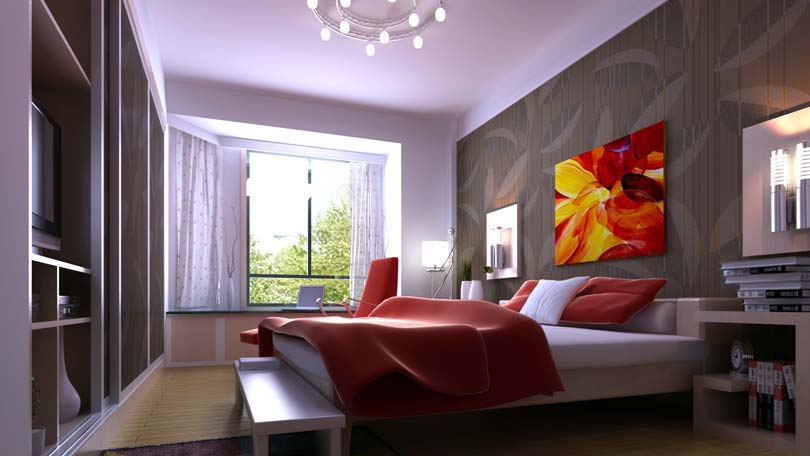
Regardless of whether your home is a 4000 square foot dream home or an 800 square foot condominium, furnishing a home from scratch can be a daunting task. To create a lovely and comfortable home you will want to find the perfect furniture that suits your family’s lifestyle, design tastes and, of course, budget. But how much does it cost to furnish a home from scratch?
Establishing a budget
If budget is of no concern to you–lucky you! You are free to search for the perfect furniture pieces from sources that include bespoke craftsmen, antique stores and high-end furniture retailers. However, most of us need to establish a home furnishings budget and find items that fit within that budget; but where do we begin?
Many designers and experts in the design field recommend spending a percentage of the purchase price or value of your home on furnishings and that figure ranges from 10% all the way up to 50%. As you can see there is no agreed upon percentage to guide you. A higher end home would indicate the ability to spend more on furniture but the reverse may be true, you may have spent the bulk of your money on the purchase and you do not have a lot of extra change for furniture. On the other hand, a less expensive home is usually smaller in size thereby requiring fewer furniture pieces and a percentage of the purchase price, no matter how low, may be too much. As you can see, this method is probably not the best guideline. It is better for you to establish your needs first and then determine a dollar figure you can afford.
What furniture pieces will I need?
Your furniture needs will be determined by not only the size of your home but also by your lifestyle and the size of your family. To begin, ask yourself these questions:
- How many rooms require furniture? This would include number of bedrooms, living spaces, dining areas and any “extras” like a media room, loft area, mudroom etc.
- What furniture pieces does each room need? Try to envision what tasks will be performed in each room and furnish accordingly. For example, a bedroom obviously needs a bed(s) but is clothing storage built-in or are dressers necessary? Is there a sitting area that will require chairs and/or a sofa; does the dining room need a sideboard; does the kitchen have a breakfast bar that needs barstools; is space for the TV built-in or is a media unit required? Many of today’s newer homes have niches or built-in shelving that eliminates the need to purchase dresser drawers, TV unit and/or bookshelves.
- Don’t overlook additional furnishings and accessories like floor and window coverings, light fixtures and lamps and, if budget allows, be sure to include artwork.
When should I splurge and when should I economize?
Even though you are working within a budget, there are times when it makes sense to splurge on specific items. For example:
- Upholstered furniture. Sofas and chairs are expensive and receive most of the wear and tear of daily life. For this reason it is wise to purchase the best your budget will allow and even splurge just a bit on these items. You will avoid having to replace that couch every couple of years or have it looking shabby and worn before its time. A good quality sofa frame will hold up for years and can be reupholstered as your tastes or needs change.
- Rugs. Think about the amount of traffic your area rugs receive. With proper care and maintenance, a “splurge” rug, like quality upholstered furniture, will last for many years and move from house to house with you.
Just as there are instances when a splurge is a good idea, there are also times when it makes sense to economize and save money on certain items, leaving room in the budget for those splurges. Consider saving on:
- Occasional tables. An inexpensive end table or coffee table, especially in a room that receives few visitors, is a good way to save money.
- Lamps. An affordable lamp shines just as brightly as an expensive lamp so go ahead and save some money when purchasing your table and floor lamps. This is also a good way to introduce a trendy color or shape that can be replaced when you grow tired of the color or it becomes outdated, as all trends will do at some point.
- Bookcases and storage units. Big box stores like Ikea and Target offer a wide selection of bookshelves and other storage units at very affordable prices.
- Artwork. While we may admire the beauty of an original piece of art or sculpture, there is no room for these items in the average household budget. However, there are very affordable prints and even original pieces of art that can be found on ebay or Etsy.
- Don’t overlook the value of thrift stores, flea markets and online resale spots like Craigslist. With just a little elbow grease and creativity you can stretch your budget and even those of us who lack artistic talents can turn a piece of trash into an affordable treasure for our homes.
Furnishing and decorating a home is a process that can take many years so sit back and enjoy the process. Your budget will help keep you on track with your purchases and also help you avoid expensive purchasing mistakes. Before you know it you will have a beautiful and comfortable home you can be proud of.
If you are looking to replace your furniture, check out Bracko Home
